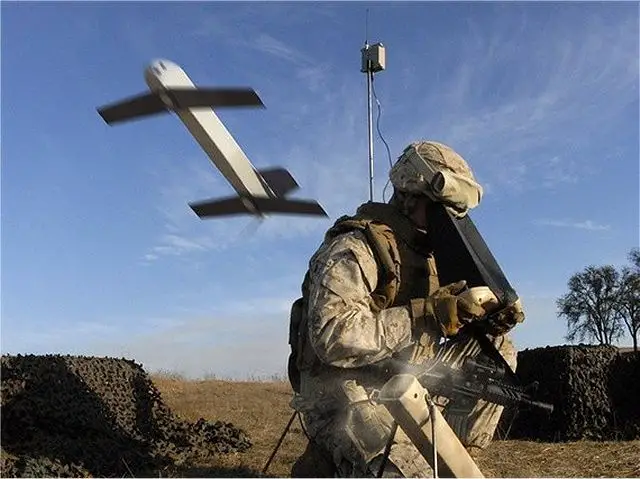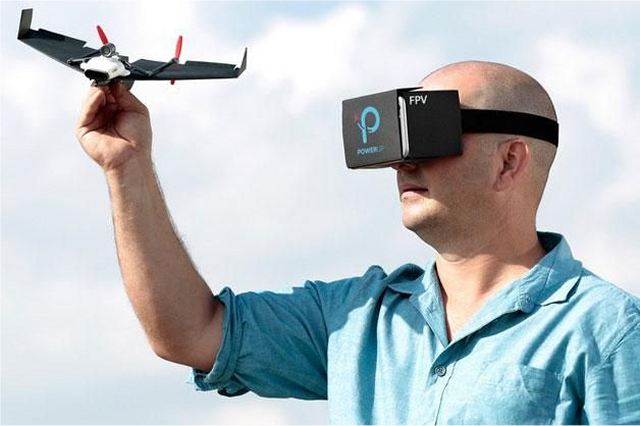Russian military will receive virtual reality helmet to control UAVs Unmanned Aerial Vehicles 11502171
|
|
|||
|
Military Defense Industry Technology - Virtual Reality Helmet
|
|||
|
|
|||
| Russian military will receive virtual reality helmet to control UAVs Unmanned Aerial Vehicles. | |||
|
The Russian military will receive a sophisticated virtual reality (VR) helmet designed for not only watching the battlefield via the cameras carried by unmanned aerial vehicles (UAV), but also controlling the UAVs by simply turning the head or the eyes, according to the Izvestia daily newspaper.
|
|||
|
|
|||
 A soldier controls UAV launch operations with Virtual Reality Helmet. A soldier controls UAV launch operations with Virtual Reality Helmet. |
|||
|
|
|||
|
The Svarog helmet developed by the Russian Defense Ministry Main Robotics Research and Test Center (GNIITs) in cooperation with Mari State University will pioneer combat VR helmets in the Russian Armed Forces.
The VR helmet’s operating principle is simple enough. It is a small video display worn on the face and divided into two by a partition. It shows each of the eyes separate slightly offset images, thus simulating a 3D image. The device also has a set of sensors gaging the position of the eyes and the tilt of the head. This enables the helmet to simulate the reality even more accurately. "Now, the Svarog is in the manufacturer’s trials and will be delivered to the Defense Ministry as soon as this year," Alexei Pechkin, a researcher with Mari State University, told the Izvestia daily. "We keep on improving the helmet and experimenting with the characteristics of its lenses, but even now the screen’s resolution is twice as that of its foreign rivals, while the Svarog’s angle of view is limited by the wearer’s natural field of view alone." Unlike commercial VR devices and augmented reality (AR) goggles used by the NATO militaries, the Russian helmet has as many as two video displays, which made the Svarog much wider than its rivals are. Its edges protrude 10 cm away from the operator’s head. Despite the cumbersome appearance, however, the device weighs 400 g, which is a standard weight of present-day VR helmets. It is this novelty - a separate display for either eye - that ensured the 5,120x2,180-pixel resolution - a fourfold increase over the resolution of a standard PC monitor. The resolution that high enables the operator to watch the ground via the UAV’s lenses in minute detail, discerning not only tanks and fighting vehicles from high altitude, but individual troops as well. |
|||
|
|
|||
 The PowerUp FPV is a paper airplane drone you control with your head The PowerUp FPV is a paper airplane drone you control with your head |
|||
|
|
|||
|
The Svarog is fit for not only aerial surveillance but for controlling drones by means of simple enough movements as well. The operator can vary the UAV’s altitude by raising or declining his head: the integral gyroscopic sensors are tracking the helmet’s tilt angle in real time and make the aircraft climb or descend depending on the input from the helmet.
Two more sensors tracking the position of the pupils of the eyes enable the UAV operator to change the flight direction by only shifting his eyes to a point of interest - the UAV will immediately follow his gaze accordingly. "Using a VR device for controlling a reconnaissance unmanned aircraft features many advantages over the traditional display and joystick," Maxim Chizhov, director for business development, Intellect and Innovation Company, and a VR expert, tells the Izvestia daily. "An up-to-date VR helmet offers the UAV operator an illusion of soaring over the battlefield, with the simulation allowing quicker decision-making and more effective control of the drone at high speed." The expert noted that the militaries of NATO’s member countries lacked devices like that. The only place the similar gear may be found is at sports competitions of UAV operators, and even there VR helmets have been new even to the most advanced drone enthusiasts. The lack of military analogs and the high performance even in comparison with commercial VR helmets make the Svarog truly unique, Chizhov summed up in his interview with the Izvestia daily. |
|||
|
|
|||
|
© Copyright 2017 TASS. All rights reserved. This material may not be published, broadcast, rewritten or redistributed.
|
|||


























